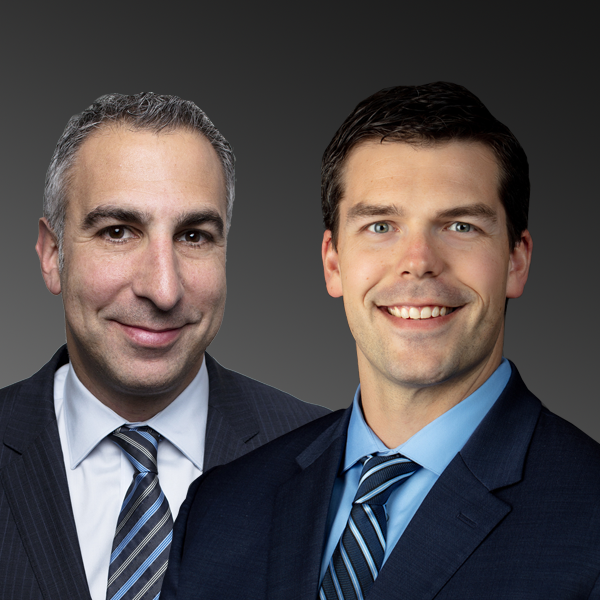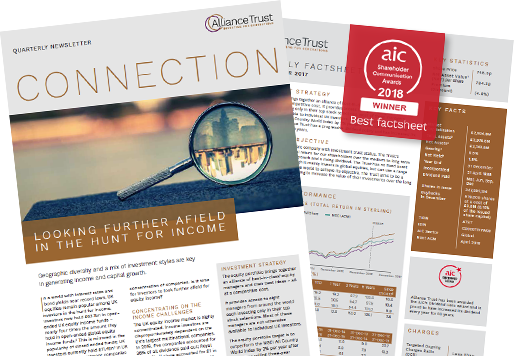Technological advancements and biological breakthroughs have helped scientists better understand the causes of disease. Stephen Zachary, partner at Sands Capital explains.
The coronavirus pandemic has highlighted the importance of the healthcare ecosystem and demonstrated the rapid innovation cycles taking place in life sciences. Numerous research breakthroughs in recent decades enabled scientists to develop Covid-19 vaccines in record time. However, we are only beginning to see the far-reaching effects of this life sciences revolution, which has the potential to improve patient outcomes and healthcare economics globally.
The complex process of drug development has typically taken years to go from discovery to commercialization. However, researchers were able to take the Covid-19 vaccine from concept to the public in less than a year. Scientists’ ability to rapidly sequence the virus’ genome was one of many factors that allowed researchers to begin developing diagnostics and therapeutics targeting the virus within weeks. Though we cannot expect the research community to function at the same breakneck speed for every disease, we do foresee an era of faster drug discovery and deployment.
While the Covid-19 pandemic shone a light on the most recent innovations, Sands Capital has studied the evolution of the life sciences sector for many years. Technological advancements and biological breakthroughs have allowed a better understanding of the causes of disease, opening the way to more precise and earlier diagnosis and treatment. We believe this life sciences revolution has created exciting opportunities for select businesses in the areas of life sciences tools, diagnostics, and therapeutics. As new technologies lower the barriers to entry, we expect that many earlier-stage businesses, many of which are still private, have the potential to capture and create value and ultimately generate wealth for long-term investors.
A Multidecade Growth Story
There has been a flood of private and public funding into the life sciences over the past 18 months; we believe that we are only at the beginning of a multidecade growth story.1 Twenty years ago, sequencing the entire human genome cost some $100 million. Today, that price has fallen to less than $700.2 As in many areas of life sciences, lower costs led to increased opportunities for experimentation and discovery, which ultimately accelerates the pace of innovation. While sequencing is one of the best examples of a tool that has become remarkably accessible, it is only one among many. Indeed, we are also excited about similar trends in other areas, including proteomics, the large-scale study of proteins.
At the same time, the global demand for new technologies and therapies continues to grow. Notably, the global population of people aged 60 and over is set to reach or surpass 2 billion by 2050, creating a greater disease burden for society and a need for continued innovation across the life sciences.3
Define: Life sciences tools businesses enable researchers to automate and scale experimentation while also uncovering new aspects of biology. These tools include gene sequencers, flow cytometers, liquid handling robots, and many other products that allow researchers to delve more deeply, and with greater efficiency, into the causes of disease. While sometimes overlooked, this subsector within the life sciences is an engine of continuous discovery.
For instance, new proteomics tools allow scientists to characterize thousands of proteins in a single sample, which is orders of magnitude higher than what technologies from earlier decades could do. Such stepwise changes in experimental capability have opened the way to rapid innovation, and, over time, we believe the proteomics space could be as transformative as the genomics space.
Tools companies typically employ a razor/razor blade business model in which customers are locked in by an instrument placement that drives subsequent pull through of related consumable products. We see opportunities in life sciences tools because many of these companies provide enabling technologies for diagnostic and therapeutic companies yet tend to have less direct exposure to risks created by drug pricing, clinical failures, and policy shifts.
Diagnose: More powerful life sciences tools have enabled businesses to develop diagnostic technologies that reduce the cost of care while improving patient outcomes. These technologies, which include liquid biopsies, imaging techniques, and genomic profiling, represent the front line of patient care.
For instance, invasive diagnostic procedures are increasingly being replaced by non-invasive molecular tests, such as liquid biopsies, that can provide a similar level of accuracy while greatly reducing the burden to the patient. Though the liquid biopsy market is in the early stages of development, we can envision a future in which patients and physicians receive critical diagnostic information from a simple blood draw. As the liquid biopsy space evolves and new applications are developed, we believe this approach will replace antiquated diagnostic models that are more expensive and less accessible to the broader population.
More frequent and precise methods of testing for disease should enable more accurate detection of disease and at an earlier stage. Earlier and more specific diagnosis should pave the way for more effective and actionable therapeutic interventions.
Treat: Enabling life sciences tools and precision diagnostics are making drug development more efficient and leading to improved therapies. Moreover, we are witnessing a proliferation of novel treatment methods that allows us to treat previously untreatable diseases. For instance, we have seen first-hand how cutting-edge gene therapy treatments can deliver lifesaving benefits to paediatric patients with devastating neurological diseases. These breakthroughs lead us to believe that an era of truly personalized and precision medicine, delivering profound results to patients in dire need, is upon us.
The way in which drug discovery is carried out is rapidly evolving. Companies developing small molecule drugs can sample chemical space, or the ensemble of all possible molecules, more effectively and efficiently to identify promising drug candidates against targets previously considered undruggable. In addition, researchers are leveraging new biologic modalities, such as cell and gene therapy, to better address certain diseases of high unmet need. In many ways, drug discovery is evolving into drug engineering, as scientists increasingly leverage prediction and synthetic biology to create novel therapies and therapeutic modalities.
These novel therapies benefit from clinical trials that leverage precision diagnostics for enrolment and tend to be more likely to succeed. Genetic profiling of patient tumours, for instance, allows biotech companies to enrol patients that are most likely to respond to targeted therapy. Over time, we believe that the simultaneous development of precision therapies and diagnostics will increase the number of diseases that can be effectively treated.
From revolution to evolution
As we move into this new era of life sciences discovery, we imagine a proliferation of tools and diagnostics that leverage massive amounts of information from patients and large-scale databases. Indeed, the life sciences industry’s ability to generate large amounts of data has challenged life sciences businesses to find ways to make sense of the disparate pieces of evidence. Platforms that employ machine learning and computational biology are emerging to help researchers glean insights from immense datasets.
We expect that the life sciences tools, diagnostic, and therapeutic companies that can best harness and utilize such data will enjoy an even greater competitive advantage, creating value and attracting investor interest. As earlier noted, we believe that some innovative early-stage businesses, benefiting from lower costs of entry and ample funding sources, are well positioned to make inroads in these spaces.
As rapid scientific breakthroughs continue to transform life sciences, we envision that select, cutting-edge companies in the field will be attractive sources of value creation for the coming decade and beyond. Our research team is excited about the expanding opportunity set of private and public businesses. Furthermore, we are confident that our domain knowledge will enable us to evaluate the emerging innovators more effectively. If we succeed in identifying and investing in the leading businesses early, we expect not only to add value and enhance the wealth of our clients over time but also to support advancements in healthcare standards globally.
Over the next decade, Sands Capital views genes and genomics, minimally invasive technologies, consumerization of health care, the humanization of pets, and globalization of innovation as the most important secular trends in life sciences.
Here Sands Capital highlights some of the stocks that it holds that fit into these categories and why they invest in them:
We expect the company’s next-gen continuous glucose monitoring (CGM) platform—known as the G7—to reshape the market as the new standard of care in diabetes. CGM provides continuous, predictive data that can monitor blood glucose levels and inform treatment decisions.
The G7 will be the thinnest, most accurate, most algorithmically advanced, and most consumer friendly CGM on the market. We believe it addresses the three largest barriers to adoption: cost, physical discretion, and insurance coverage/availability.
Over time, we expect Dexcom to leverage its data and further differentiate the G7 platform via future software and data analytics capabilities. Beyond insulin-intensive diabetics, who are the primary users of CGM today, but are still underpenetrated, we expect the G7 to address the massive and largely unaddressed population of non-insulin-intensive Type 2 patients. CGM sensors enable recurring revenues due to their replacement frequency.
As G7 adoption inflects, we expect margin leverage, given the low production cost and distribution via higher-margin channels (e.g., pharmacies).
Edwards Lifesciences creates artificial heart valves to treat advanced cardiovascular disease. Edwards pioneered the development of artificial heart valves used to treat aortic stenosis, a disease characterized by a progressive hardening and dysfunction of the aortic valve, a life-threatening condition. The only treatment is replacement of the valve through open heart surgery or transcatheter aortic valve replacement (TAVR). We believe growing adoption of TAVR will be the primary driver of the company's growth over our investment horizon. We believe the rise of minimally invasive surgery is a major secular trend in healthcare as it improves patients' recovery times and provides savings to the broader healthcare system relative to open surgery. Additionally, Edwards is utilizing its expertise in minimally invasive valve technology to begin addressing other structural heart dysfunctions, particularly in the mitral and tricuspid valves, which should provide large, long-term growth opportunities.
Zoetis is the global leader in the development, manufacturing, and commercialization of animal health medicines for livestock and companion animals. Zoetis—spun off from Pfizer* in 2013—has a broadly diversified business across geographies, species, and product categories. In our view, the animal-health industry provides steadier and more predictable growth prospects than human health, due to lower generic threats, lack of third-party payers, and faster and lower-risk R&D cycles. As the global market-share leader in this growing but consolidating industry, we believe Zoetis is best positioned to benefit from durable secular trends, including rising demand for animal proteins, a growing need to improve livestock productivity, and increasing ownership and spending on companion animals. This leadership position provides Zoetis with brand recognition, pricing power, and scale advantages. Zoetis was a pioneer in developing livestock medications and continues to feature a highly innovative and productive R&D engine across both livestock and companion animals. Beyond its leadership position and pipeline, we view its salesforce, management team, and strategic M&A potential as key differentiators.
The featured portfolio companies, Dexcom Edwards Lifesciences and Zoetis are the sole life sciences holdings in the Focus 20 portfolio (as of 9/25/2021), which is what Alliance Trust invests in.
*Pfizer is not a current holding in any Sands Capital strategy.
The views expressed are the opinion of Sands Capital Management and are not intended as a forecast, a guarantee of future results, investment recommendations, or an offer to buy or sell any securities. The views expressed were current as of the date indicated and are subject to change. This material may contain forward-looking statements, which are subject to uncertainty and contingencies outside of Sands Capital’s control. Readers should not place undue reliance upon these forward-looking statements. There is no guarantee that Sands Capital will meet its stated goals. Past performance is not indicative of future results. The specific securities identified and described do not represent all of the securities purchased, sold, or recommended for advisory clients. There is no assurance that any securities discussed will remain in the portfolio or that securities sold have not been repurchased. You should not assume that any investment is or will be profitable. GIPS® reports and additional disclosures for the related composites may be found at Sands Capital Annual Disclosure Presentation.
Read more investment expertise






